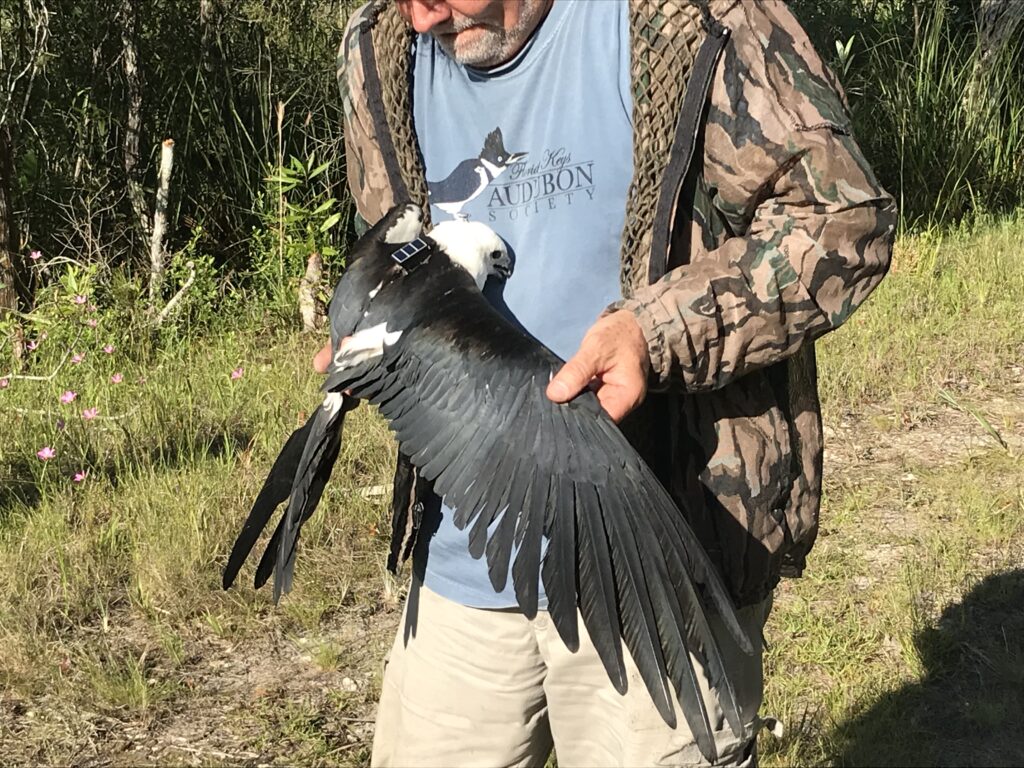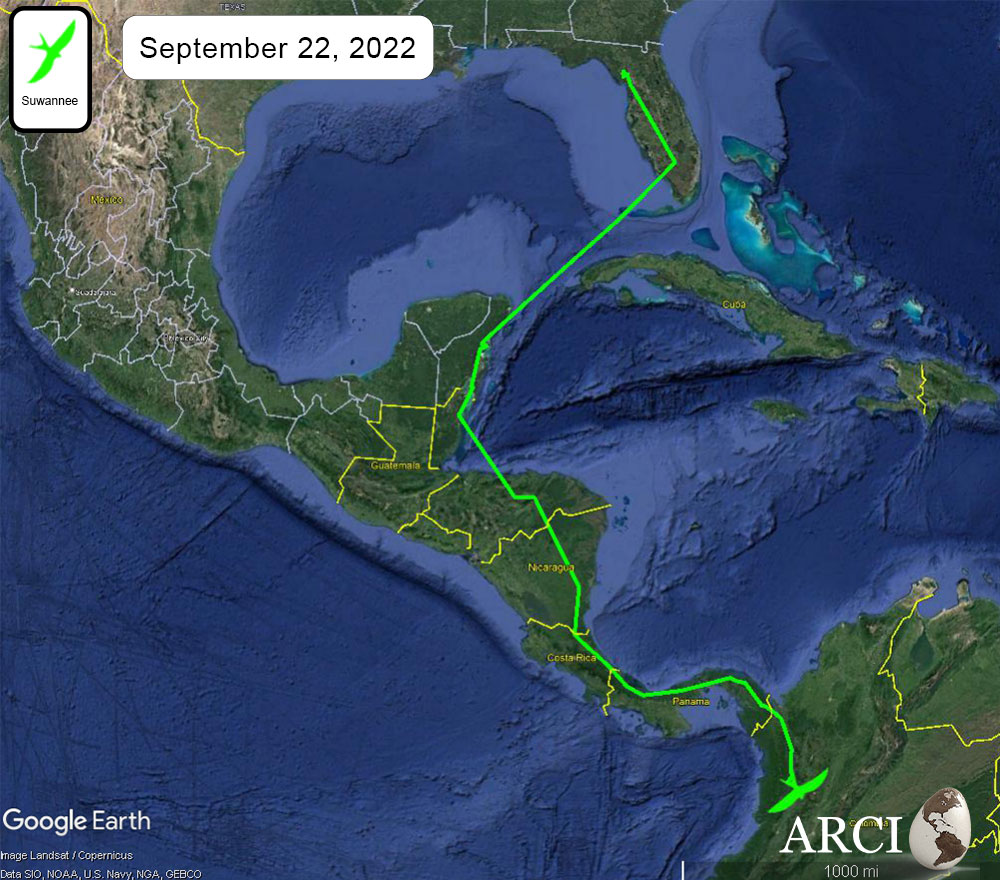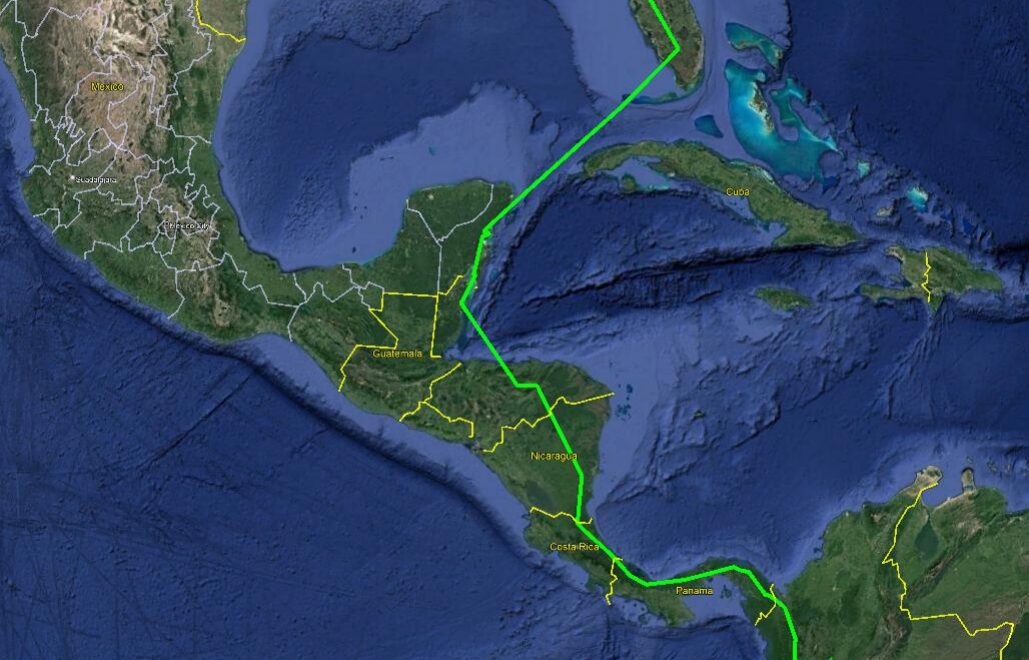ARCI is now tracking two GPS-tracked Swallow-tailed Kites from the Lower Suwannee National Wildlife Refuge (NWR): “Suwannee II”, a female, was tagged in June 2022 and “Suwannee”, a male, was tagged in June of 2019. ARCI uses the tracking data to identify migration patterns, roost sites, winter destinations and nest locations of Swallow-tailed Kites across their range.
Suwannee II has completed a smooth trip across the Gulf of Mexico to Central America, along with all the other kites we are following this season.

We thought Suwannee’s transmitter (2019 kite) had quit in April of 2022 after he returned to his breeding location on the Lower Suwannee NWR. Imagine our surprise this month during our daily checks on the GPS-tracked Swallow-tailed Kites when WOW!, there was new data from Suwannee in Nicaragua!
Suwannee has an older transmitter of a different model than the other kites we are tracking, and we are getting at most, one location a day from him now. It is possible that the cell towers near the Lower Suwannee NWR changed from 5G to LTE at the end of April 2022 and the software in Suwannee’s transmitter could not relay the daily locations anymore because it was not compatible with the new technology. Once Suwannee got to Central America, he then came within range of cell towers compatible with his transmitter and all the stored data since April was uploaded, as you can see in his tracking map.

From the concentration of Suwannee’s GPS locations in the Lower Suwannee NWR, we were able to locate a nest with a brooding kite on it in April before Suwannee’s transmissions terminated.
We have been using rapidly-evolving, cutting-edge transmitter technology since 2016. It is safe for the birds and affordable for our study objectives. This technology, however, can be tricky. Sometimes data doesn’t upload for days, weeks, or months because the kites are too far from certain types of cell phone towers (3G, 5G, LTE, etc.). We know that if the kite makes it back safe to the U.S that we will receive all the stored GPS locations from the entire journey. We are hoping however, that the kites will pass near compatible towers at some point in their journey, so we can continue to follow them all south!
We can’t expect much more from Suwannee’s old transmitter, but we will celebrate these successes and his survival in every location.
Funds for the tracking units for both Suwannee Kites were provided by the Friends of the Lower Suwannee National Wildlife Refuge. We are grateful to the staff at the Lower Suwannee National Wildlife Refuge for their support and interest in this research.


Great news! I’m waiting to see them back I’m Gilchrist County!